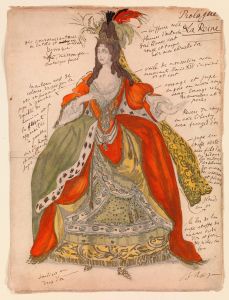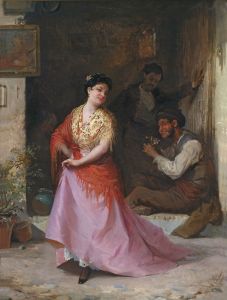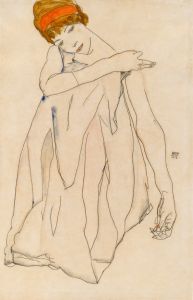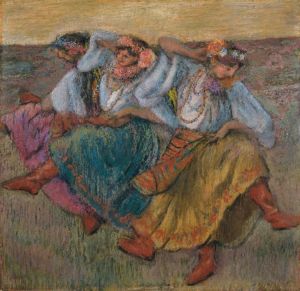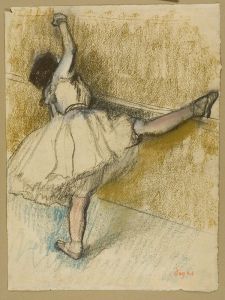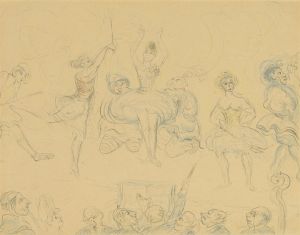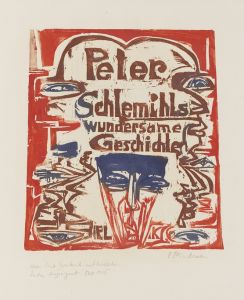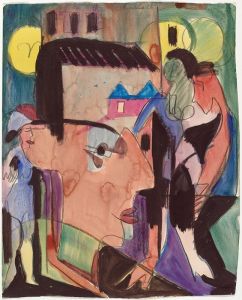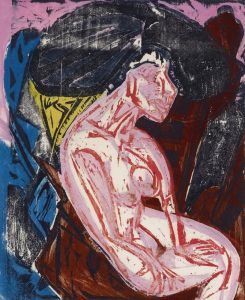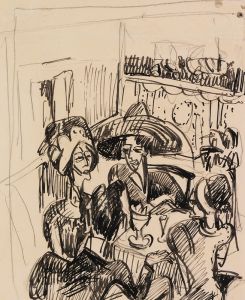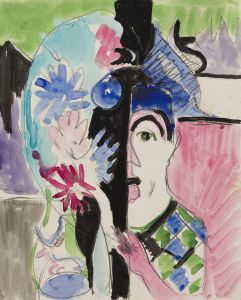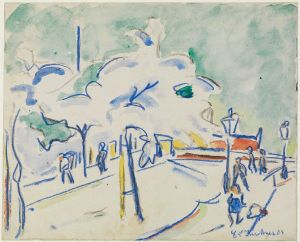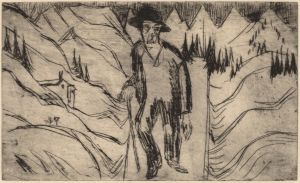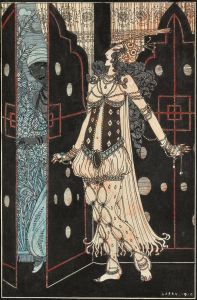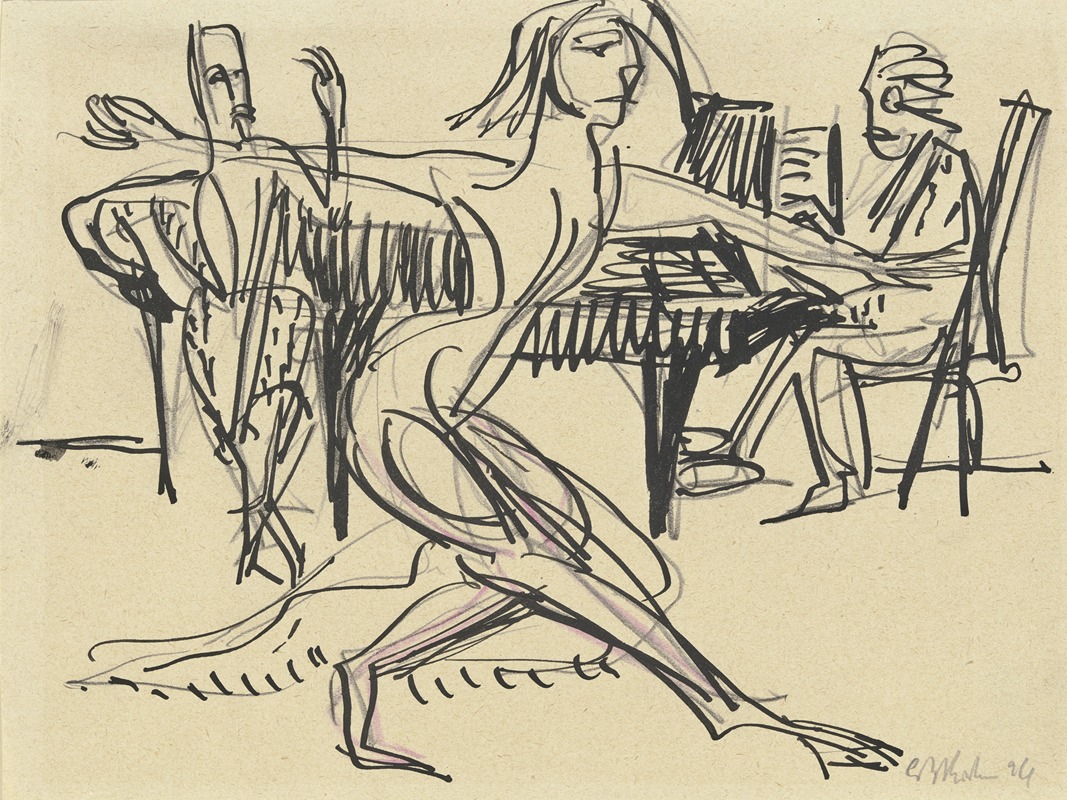
Tänzerin vor einem Flügel
A hand-painted replica of Ernst Ludwig Kirchner’s masterpiece Tänzerin vor einem Flügel, meticulously crafted by professional artists to capture the true essence of the original. Each piece is created with museum-quality canvas and rare mineral pigments, carefully painted by experienced artists with delicate brushstrokes and rich, layered colors to perfectly recreate the texture of the original artwork. Unlike machine-printed reproductions, this hand-painted version brings the painting to life, infused with the artist’s emotions and skill in every stroke. Whether for personal collection or home decoration, it instantly elevates the artistic atmosphere of any space.
Ernst Ludwig Kirchner's painting Tänzerin vor einem Flügel (translated as Dancer in Front of a Grand Piano) is a work created by the German Expressionist artist, who was a founding member of the influential art movement Die Brücke (The Bridge). Kirchner, known for his bold use of color, dynamic compositions, and exploration of modern life, often depicted themes of urbanity, performance, and human emotion in his works.
This painting portrays a dancer positioned in front of a grand piano, capturing a moment of performance or rehearsal. The composition reflects Kirchner's characteristic style, with expressive brushstrokes, vivid colors, and a sense of movement. The dancer's form is stylized, emphasizing rhythm and energy rather than realistic detail. The grand piano, a recurring motif in Kirchner's works, serves as both a compositional anchor and a symbol of the cultural and artistic milieu of the early 20th century.
Kirchner's interest in dance and performance was influenced by the vibrant cultural scene of Dresden and Berlin during his career. He frequently depicted dancers, cabaret performers, and musicians, drawing inspiration from the dynamic interplay between performers and their environments. These subjects allowed him to explore themes of modernity, creativity, and the human experience.
The exact date of Tänzerin vor einem Flügel is not definitively documented, but it is consistent with Kirchner's works from the early 20th century, a period when he was deeply engaged with the Expressionist movement. During this time, Kirchner and his contemporaries sought to break away from traditional artistic conventions, favoring emotional intensity and subjective interpretation over realism.
As with many of Kirchner's works, this painting reflects the artist's innovative approach to form and color, as well as his ability to convey the energy and atmosphere of his subjects. It is an example of his contribution to the development of modern art and his role in shaping the Expressionist aesthetic.
Further details about the painting's provenance, current location, or specific historical context are not widely documented.





